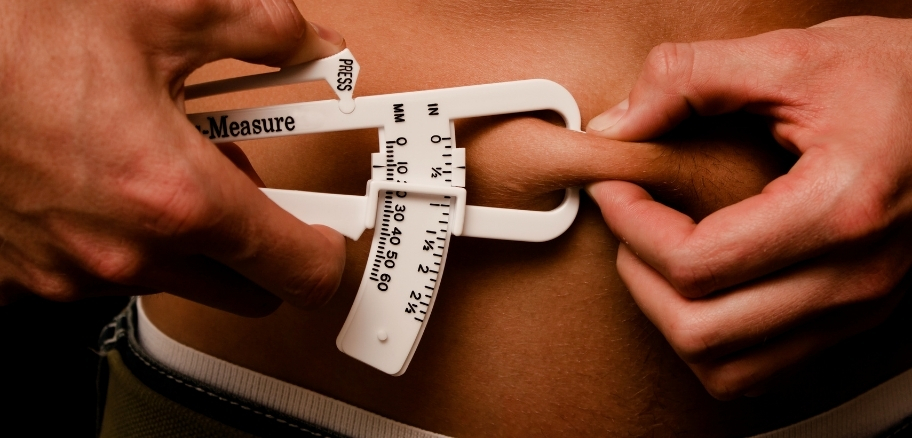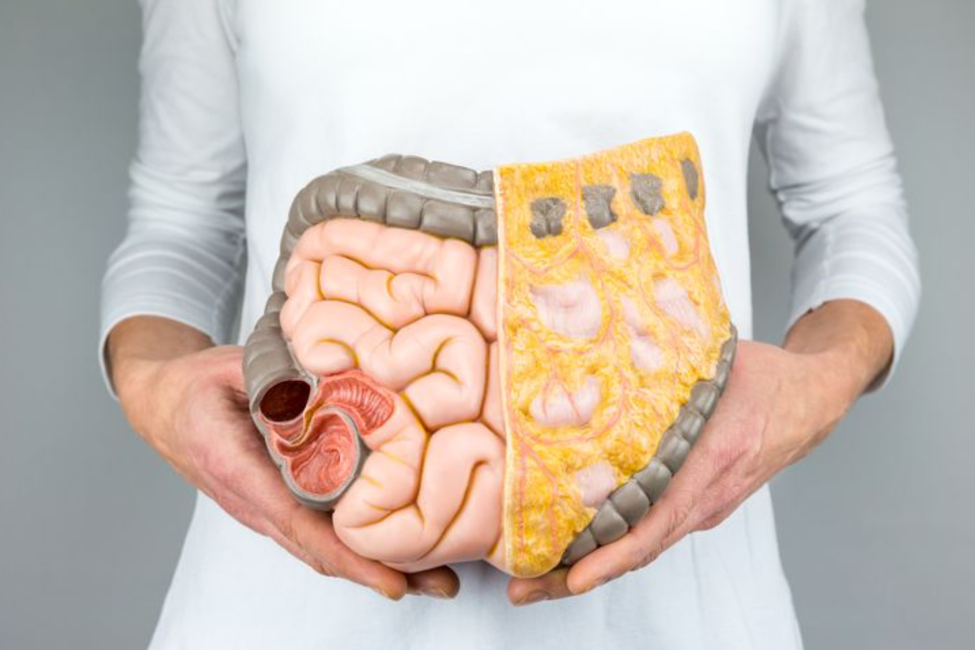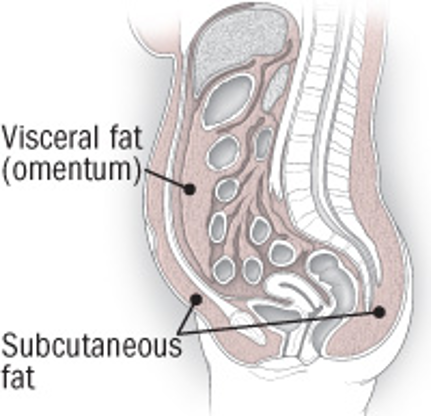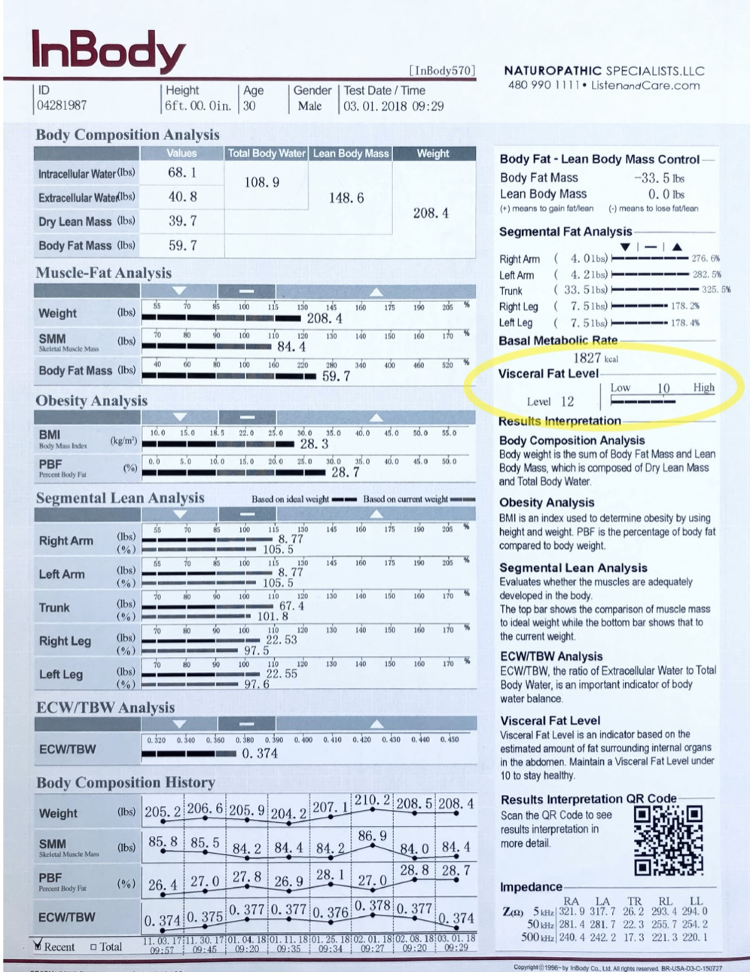Why You Should Worry About The Fat You Can’t See
category: Weight Loss

People often gauge how much fat they have by what is visible to the eye and what you can grasp with your hand, also known as subcutaneous fat. But did you know that we have fat that you can’t see? Visceral fat lies out of reach beyond your abdominal wall and surrounds the organs in your midsection.

Dangers of high Visceral Fat:
A high level of visceral fat is cause for more serious concern than just your total body fat percentage because of where it’s located. According to research at Harvard Health, visceral fat was discovered to be biologically active, meaning it acts as an endocrine gland and produces hormones along with other substances that could negatively affect and disrupt our overall health.1 Visceral fat increases the small proteins called cytokines that are critical in cell signaling and are responsible for regulating inflammation in the body. Systemic inflammation puts us at risk for cardiovascular disease, diabetes, high blood pressure and other chronic diseases. Additionally, visceral fat strongly provokes your cells to resist insulin that normally pushes energy (in the form of glucose) into cells and resistance to this process causes glucose to stay in the blood stream eventually leading to Type 2 Diabetes.

How do I know how much I have?
If we can’t see it, how do we go about knowing how much we have? While a good indicator may be measuring your waistline, this is not always the most accurate reading. Luckily, there is an easy and noninvasive technology available called the bioelectrical impedance analysis (BIA) which is a method used to measure the components of the body, including muscle mass, body fat, and total body water. Alternating low and high-frequency electrical currents are sent through the water in the body via contact with electrodes to measure impedance. The impedance is used to determine total body water (TBW), which can then be used to derive your fat-free mass – the portion of your body that does not contain fat, including your muscle and bone – and then body fat.2
At Victory Men’s Health we use the InBody scale which is a medical-grade body composition device used to measure outputs such as skeletal muscle mass, percent body fat, basal metabolic rate and the presence of visceral fat. Having this valuable information allows us to have a better and deeper understanding of our complete body composition for overall health goals. Your visceral fat level reading on this scale will tell you if it falls within a range considered to be dangerous for your overall health.

What to do?
Aside from a genetic predisposition and poor diet, the other causes of accumulating visceral fat over time are:
- Consuming more calories than burned due to lack of exercise
- Overconsumption of alcohol
- Excessive stress, likely related to cortisol levels
- General aging as muscle mass decreases with age making it more difficult to maintain a healthy weight for your height
- Hormone imbalances
While this can be a wake up call for many, the good news is regular exercise paired with a healthy diet can reverse visceral fat build up and prevent future fat storage. Processed foods are the enemy of healthy body composition and avoiding as much as possible is a good start.
In addition to lifestyle changes, hormone optimization increases lean body mass (muscle) and decreases visceral fat. Hormones are often overlooked by primary care physicians in treating body composition challenges but they can have a profound effect. For more information on getting your levels checked, visit victorymenshealth.com or call 618-632-9000 (IL) or 314-833-9000 (MO).
References